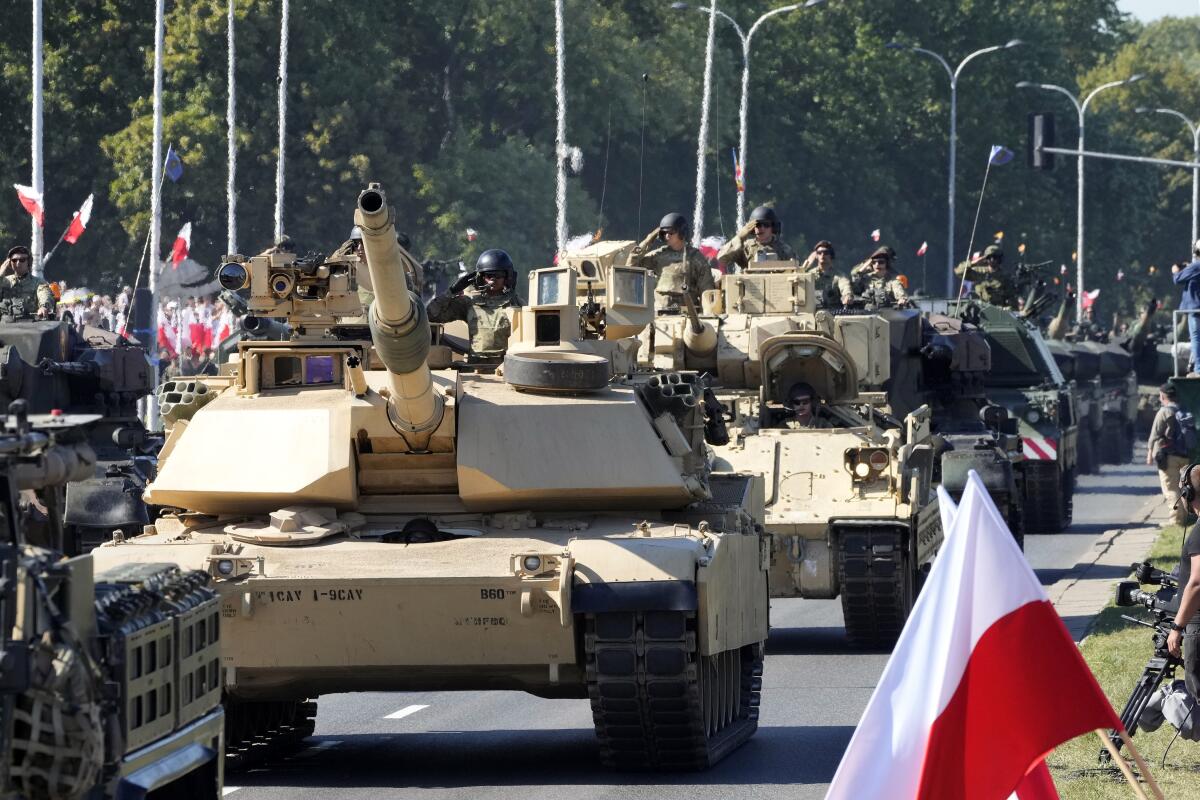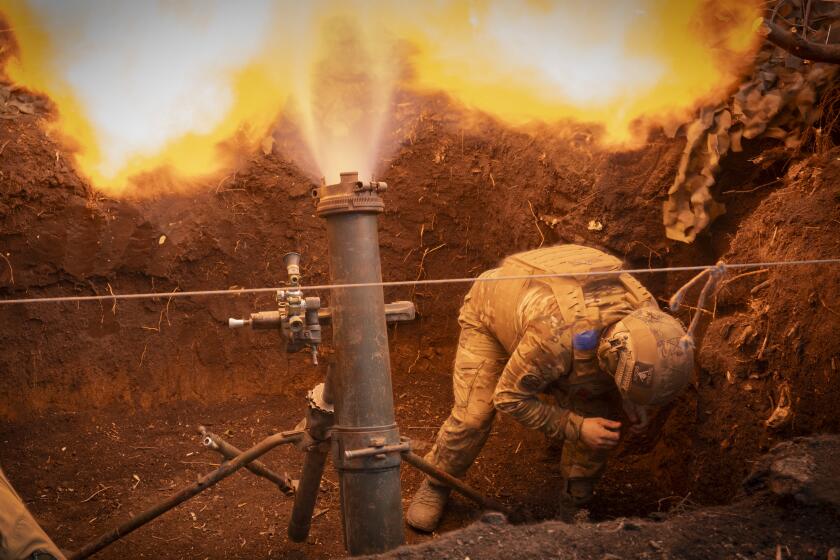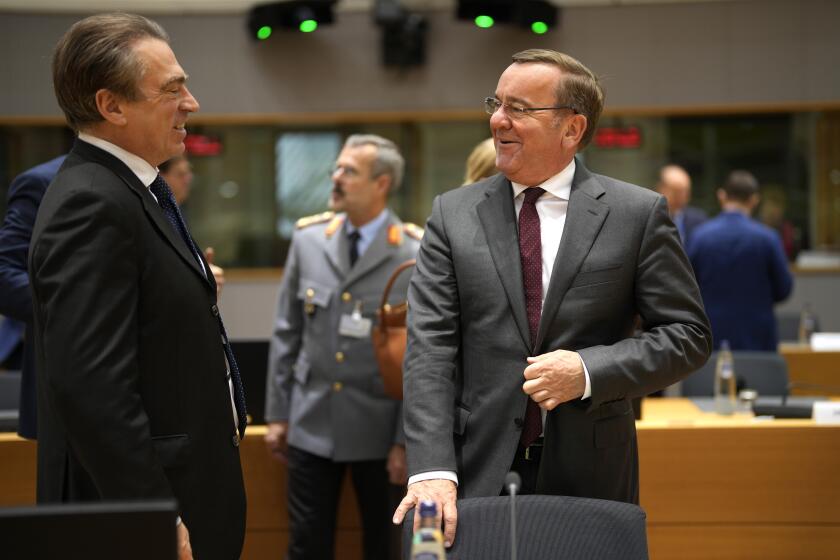The EU buys too much defense equipment abroad, especially from the U.S., major report says

- Share via
BRUSSELS — European Union countries are buying too much of their defense equipment abroad, almost two-thirds of it from the United States, and failing to invest enough in joint military projects, a landmark report on EU competitiveness warned on Monday.
The 27 member states are also failing to make best use of Europe’s research and development capacities to modernize their armed forces, with just a fraction of the level of U.S. investment, said the report by former Italian Prime Minister Mario Draghi, who also has served as head of the European Central Bank.
The report comes as the EU continue to struggle to find enough weapons and ammunition to help Ukraine survive the full-scale Russian invasion, now in its third year, and to kickstart Europe’s defense industry.
“Europe is wasting its common resources. We have large collective spending power, but we dilute it across multiple different national and EU instruments,” said Draghi’s report, which has been a year in the making and is likely to fuel an overhaul of the bloc’s industrial strategy.
Part of the problem, it said, is failing to invest properly in Europe to create stronger defense firms.
The European Union has outlined ambitious plans to boost its defense industry as the bloc responds to the threat posed by Russia and uncertainty about U.S. commitment.
“We are still not joining forces in the defense industry to help our companies to integrate and reach scale,” it said. The report pointed out that “we also do not favor competitive European defense companies.”
The report notes that, between mid-2022 and mid-2023, 63% of all EU defense orders were placed with U.S. companies, and a further 15% with other non-EU suppliers. Last week, the Netherlands joined a list of EU members to order big-budget U.S.-made F-35 warplanes.
Across the 27 nations in 2022, defense research and development spending amounted to 10.7 billion euros ($11.8 billion) — just 4.5% of the total — compared with $140 billion by the United States, or around 16% of all defense spending.
NATO allies — almost all of whose members are part of the EU — have been ramping up defense spending since Russia annexed Ukraine’s Crimean Peninsula in 2014. Their aim is for each country to spend at least 2% of gross domestic product on its national defense budget.
Consecutive U.S. leaders have been exhorting European allies and Canada to spend more on defense for more than a decade, although former President Trump was the only one to threaten to refuse to defend any country that did not respect the goal. Much of the money goes back to U.S. industry.
European Union nations acknowledge that they risk failing to provide Ukraine with the ammunition they pledged to help it fight Russia’s invasion.
NATO forecasts that 23 of its 32 members will meet or exceed the 2% target by the end of the year, up from just three countries in 2014. Western defense spending has been further spurred by Russia’s ful-fledged invasion of Ukraine in 2022.
On top of this, NATO allies also want to dedicate at least 20% of their national defense expenditure to major new equipment. That includes funds for research and development, which is crucial for modernizing their armed forces.
The report highlighted the shortcomings of countries investing in their own national defense industries rather than joint procurement. When Ukraine appealed for artillery, for example, EU countries supplied 10 types of howitzers, some of which use different types of 155-millimeter shells, causing logistical headaches.
In contrast, the A-330 Multi-Role Tanker Transport plane was developed jointly, and this allowed participating countries to pool resources and share operating and maintenance costs.
Cook writes for the Associated Press.
More to Read
Sign up for Essential California
The most important California stories and recommendations in your inbox every morning.
You may occasionally receive promotional content from the Los Angeles Times.












